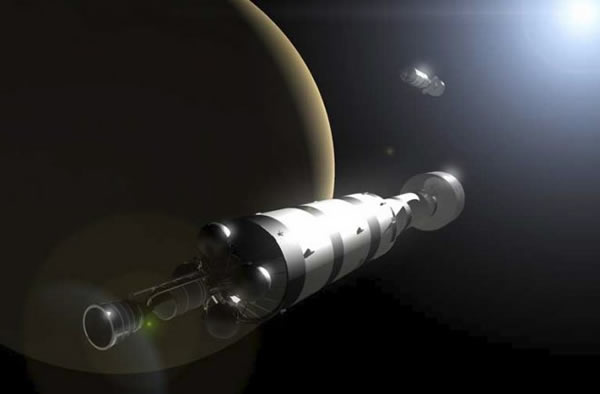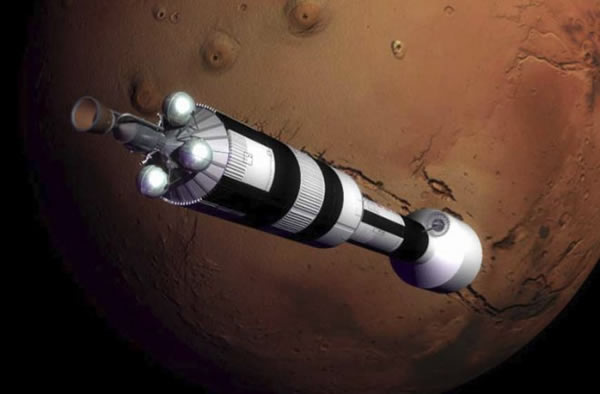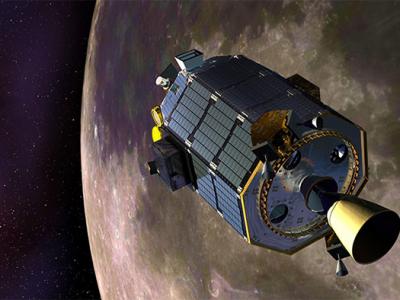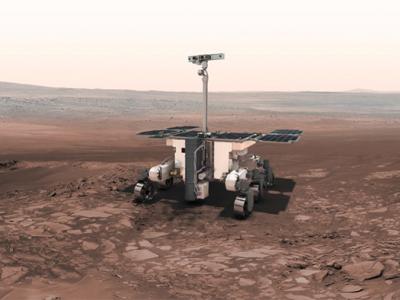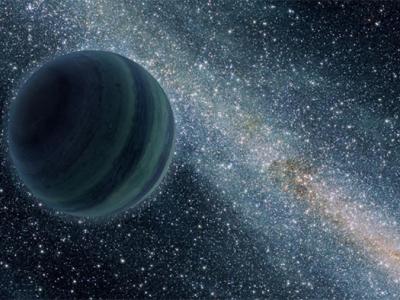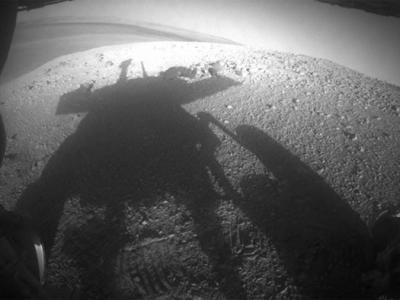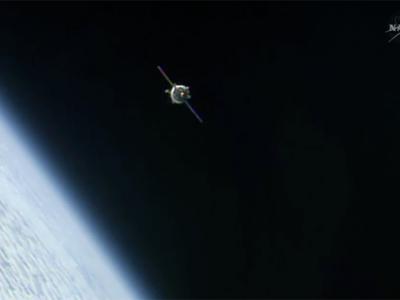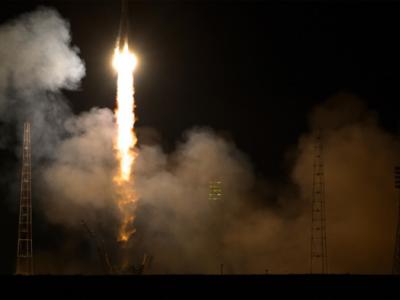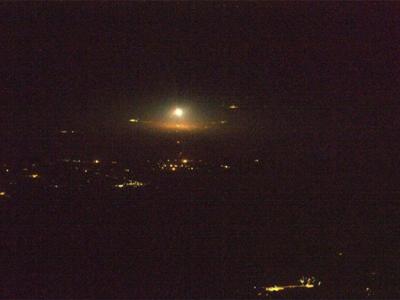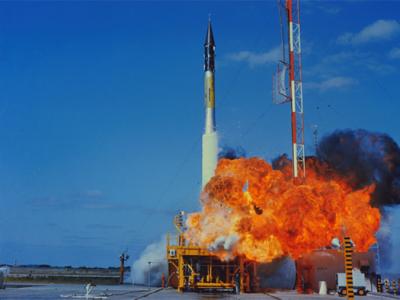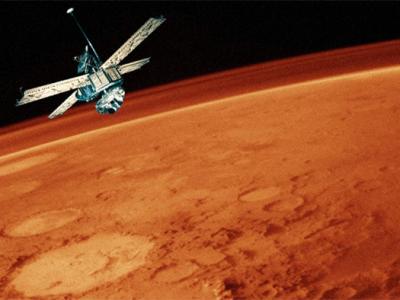Nuclear Propulsion for Solar System Domination
Icarus Interstellar is a nonprofit corporation dedicated to accomplishing interstellar flight by 2100. The Center for Space Nuclear Research (CSNR) is a focus for research and development of advanced space nuclear systems, including power and propulsion systems, and radioisotope power generators. Icarus Interstellar have recently partnered with CSNR to bring you a series of articles aimed at exploring the potential uses of nuclear power for space propulsion and power generation for space missions. Topics like this, and more, will be discussed at this year's "Starship Congress" hosted by Icarus Interstellar in Dallas this August.
With the recent excitement surrounding Dennis Tito's announcement of Inspiration Mars -- an ambitious plan to take advantage of the fortuitous close approach and send a couple on a flyby of Mars to leave Earth in 2018 -- it's easy become myopic and consider the planets of our solar system as the next logical step in our collective exploration of, and expansion into, space.
With that said, it's incredibly important to recognize that the planets are, from a technological and engineering standpoint, extremely challenging objects to both visit and ultimately return from due to their comparatively large gravitational fields.
On a planetary surface, we are stuck at the bottom of a deep gravitational potential energy 'hole', and escape from this hole requires high thrusts, precision timing, and lots of energy. The immutable laws of physics ensure that planetary exploration will always be extremely energy intensive.
An often overlooked, yet equally tantalizing destination, is the asteroid belt. For our economy to continue to grow, we need an abundant reservoir of resources, and this can be provided by the asteroids.
While their total volume is, in fact, less than the Earth's total volume, they are more accessible than the depths of our own (or other) planets. Asteroids are known to be rich in many materials including carbon, nitrogen and hydrogen. The asteroids hold astonishing potential for mining -- something currently being investigated commercially by the company Planetary Resources, backed by founder of the X-Prize Peter Diamandis.
Artist impression of the Nuclear Engine for Rocket Vehicle Application (NERVA) spacecraft arriving at Venus orbit.
However, it is also possible that the asteroids may become home to humans of the future. Of the 100 billion or so asteroids in our solar system, about 1 percent are large enough to be modified into something that could be turned into a human settlement, indicating an abundance of living area waiting to be developed.
While asteroids are relatively ubiquitous, the highest density lies between the orbits of Mars and Jupiter, so this real estate is, potentially, a prime target for the asteroid settlers of the future. At this distance from the sun, the solar intensity is only about 1/10th that we receive on Earth; however, it is still sufficient for plant growth, implying that the asteroid settlement could still engage in crop and agricultural activities for food and materials.
With so many bodies in our solar system, opportunities for a wide variety of experimental cultures and an vast array of intrinsic personal and cultural freedoms become manifest.
Concept sketch of an asteroid settlement.
Not only that, but we currently suffer the 'all eggs in one basket' pathology. Namely, if something catastrophic happens to Earth, we could find the very survival of the human race at stake -- something Steven Hawking has been alerting us to for some time now.
While no existential threats appear to loom on our horizon, we know that the Earth has undergone numerous mass extinctions in its rich history, so it would be the epitome of hubris to think that humanity was invulnerable to nature’s undistinguishing wrath. A vast collection of asteroid colonies would mitigate any threats to the human species posed by an extinction event on Earth.
Once the asteroid belt has been explored and settled, the rich resources of the Jovian planets could be harnessed, further broadening our capabilities and influence throughout the solar system.
With gigantic ice fields, Europa might be a target since any inhabitants could, conceivably, burrow beneath the ice for protection from the Jovian radiation. In addition, the ice would provide a virtually unlimited reservoir of drinking water for the inhabitants, not to mention oxygen (for breathing) and hydrogen (for propulsion).
Eventually, one can conceive of the final phase of humanity’s expansion into the solar system, with the exploration and utilization of the resources of the Kuiper Belt.
This is a distant region at the edges of our solar system, similar to the asteroid belt but believed to be up to 200 times more massive. It consists primarily of small bodies that are the remnants of the initial formation of the solar system.
This vision for the manned expansion into the solar system will require, among other things, propulsion systems more advanced than chemical rockets.
To date, one of the most promising technologies is the Nuclear Thermal Rocket (NTR), a system which uses the heat of nuclear fission to heat hydrogen, which is then channeled rearward from the nozzle to generate thrust. Thin channels in the nuclear fuel radiate the heat of fission to the hydrogen, producing a higher exhaust velocity and hence greater efficiency than even the most advanced chemical rockets.
Artist impression of the Nuclear Engine for Rocket Vehicle Application (NERVA) spacecraft arriving at Mars orbit.
Nuclear Thermal Rockets are a significant improvement over chemical rockets in the context of solar system exploration. Research and development at the Center for Nuclear Space Research, at the Idaho National Laboratory, in tungsten cermet fuels indicate promising avenues for future development.
While the public has expressed some reservations about the use of nuclear fuels -- and international treaties currently preclude their use -- public, scientific, and political opinion on the subject are shifting. This is largely thanks to new reactor and rocket designs that prohibit the accidental release of radioactive materials.
It is important to note that a NTR would most likely be launched from orbit, so the nuclear reactors would be shipped dormant from Earth and activated outside the Earth’s atmosphere.
Moreover, the containment vessels are designed to survive even a catastrophic explosion during lift off, so scenarios that lead to any form of radioactive contamination are exceedingly hard to visualize. Even once a NTR is brought online in orbit, its radiation output would be negligible compared to the intense radiation already incident on the Earth’s magnetosphere from the sun.
Given these design considerations, NTR technology is increasingly viewed as a safe, efficient, and likely necessary technology for mankind to take its next steps into the solar system.(Apr 30, 2013 09:13 PM ET // by Richard Obousy, Icarus Interstellar)
